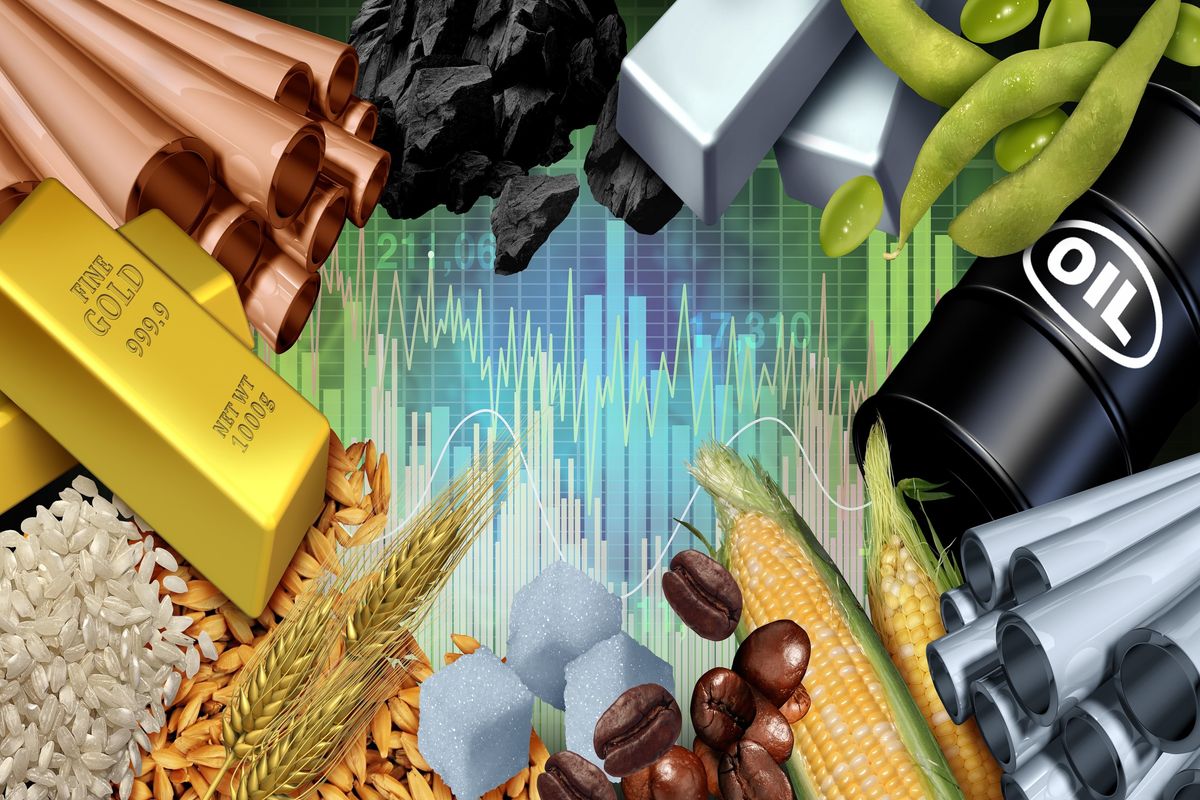Sprott Commodities Outlook: Trends for Uranium, Copper, Gold and More in 2025
Sprott outlines key resource sector trends for the year ahead, including how the transition to renewable energy and the push for decarbonization will continue to drive demand for critical materials.

Commodities markets are transforming as global economic priorities and energy policies evolve.
In a 2025 commodities outlook report, global asset manager Sprott states that materials crucial to the energy transition and those tied to traditional industrial demand will be crucial in reshaping price trends and supply/demand balances.
While critical minerals such as uranium, copper and silver are experiencing robust demand driven by renewable energy investments, commodities tied to traditional economic growth models, such as iron ore and metallurgical coal, are facing challenges, particularly due to China's slowing economic momentum.
In 2025, the firm expects these trends to persist as the global economy grapples with electrification, digitalization, climate imperatives and geopolitical uncertainty.
Uranium, copper and silver have energy transition momentum
The transition to renewable energy and the push for decarbonization continue to drive critical materials demand.
Commodities such as uranium, copper and silver play an integral role in constructing renewable energy infrastructure and electric vehicles (EVs), as well as in grid modernization. Sprott states that renewable energy investments remain resilient despite potential policy changes in key markets like the US. Technological advancements and the declining cost of renewable energy systems have helped offset uncertainties tied to shifting political priorities.
Even under scenarios where subsidies and incentives are scaled back, the fundamental drivers of the energy transition — electrification and climate change concerns — are expected to sustain demand for critical materials.
Forecasts are bullish for uranium in particular, which is supported by growing interest in nuclear energy. Geopolitical risks and supply constraints have further amplified uranium’s strategic importance.
While the spot price corrected in 2024, long-term fundamentals remain strong, with demand far outstripping supply. Efforts to restart idled mines may alleviate some pressure, but the global uranium market remains in deficit.
Copper, another cornerstone of the energy transition, is also positioned for growth. Its applications in electrification, artificial intelligence technologies and renewable energy make it indispensable in a decarbonized economy.
However, Sprott points out that declining ore grades and persistent supply-side challenges constrain its availability, which could widen the market deficit in 2025.
Iron ore, met coal and oil markets tied to China
In terms of commodities related to traditional industrial activity, Sprott notes that China’s economic trajectory is exerting a profound influence on these markets, including iron ore, metallurgical coal and Brent crude oil.
While the country remains a critical driver of global demand, its economic growth is undergoing structural changes.
China’s efforts to balance export-led growth with domestic consumption and technological self-reliance have altered its commodities consumption patterns. The slowdown in the Chinese property market, a major consumer of steel and cement, has reduced demand for iron ore and metallurgical coal. Additionally, the Asian nation's increased focus on renewable energy and EVs has shifted some investment away from fossil fuels.
This pivot is contributing to the underperformance of China-led commodities relative to critical materials.
While infrastructure spending and grid modernization in China are expected to continue supporting demand for some materials, Sprott believes that the broader trend suggests a decoupling of traditional industrial commodities from economic growth in the region.
Central banks to continue buying gold
Gold continues to be a reliable safe-haven asset, with its price reaching new highs in 2024.
Sprott explains that central banks and sovereign entities have driven much of the demand for the yellow metal, countering the traditionally negative effects of high bond yields and a strong US dollar.
The growing appeal of gold as a store of value stems from rising geopolitical tensions and inflationary concerns.
In 2025, the firm expects robust demand from the official sector to continue supporting the gold price, highlighting the precious metal’s enduring relevance amid economic and market uncertainties.
Market uncertainty and volatility to remain high
Overall, global commodities markets are poised for heightened volatility in 2025, driven by a mix of geopolitical, economic and policy-related factors. Political shifts in the US, trade conflicts and increasing threats of trade retaliation and punitive tariffs are among the key variables Sprott sees influencing investor sentiment.
In the US, uncertainties surrounding renewable energy policy under a new administration are creating ripple effects across energy and commodities markets. Proposed rollbacks of EV tax credits and emissions standards could dampen the pace of the energy transition. However, state-level climate regulations and private sector investments are expected to partially offset these impacts, ensuring continued demand for critical materials.
Geopolitical tensions, including Russia’s ban on enriched uranium exports and instability in major uranium-producing regions like Niger, are some recent events complicating supply chains.
Further, rising protectionism and trade restrictions on key materials, particularly those tied to the energy transition, may exacerbate market imbalances for the commodities market moving forward in 2025.
Don’t forget to follow us @INN_Resource for real-time news updates!
Securities Disclosure: I, Giann Liguid, hold no direct investment interest in any company mentioned in this article.
